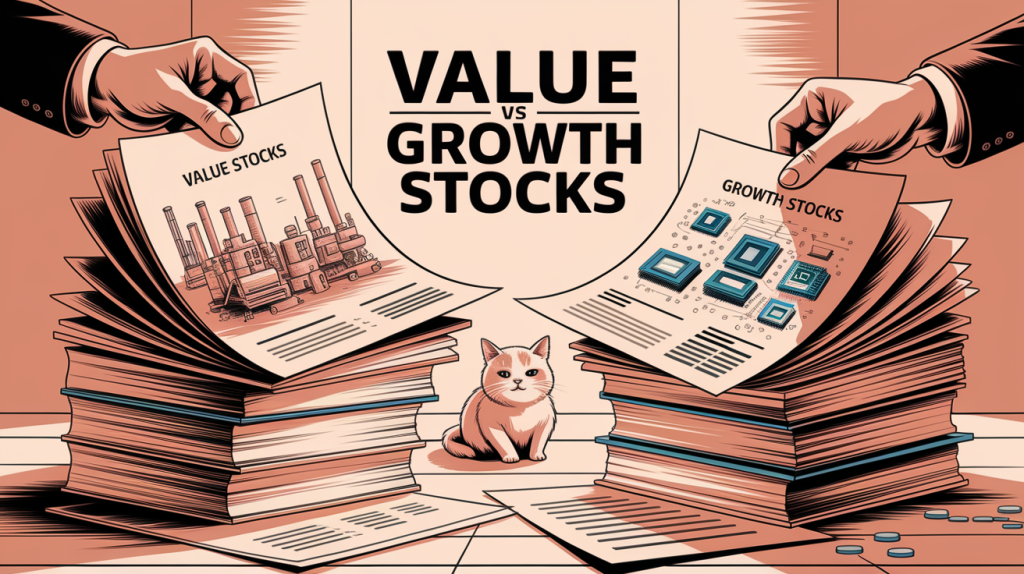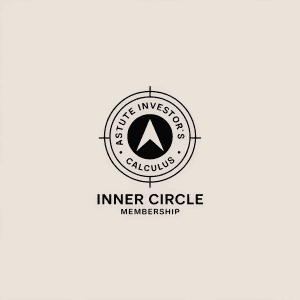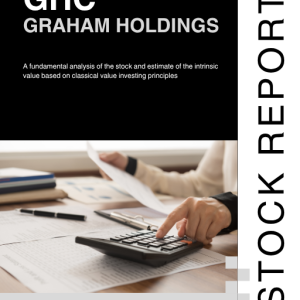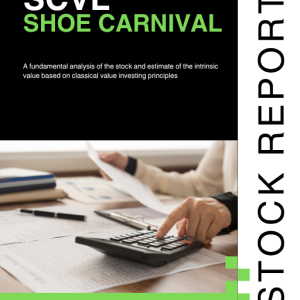
The Odds Are Never Even—Unless You Make Them So
At its core, investing sounds simple: buy the stocks that will go up and avoid the ones that won’t. But reality doesn’t cooperate. The future is uncertain, and every decision we make is a guess—hopefully an educated one. So we lean on probabilities, shortcuts, and heuristics to make the process manageable. One of the most common shortcuts is the value vs. growth distinction.
Every time you choose a stock, you’re really choosing between competing sets of odds. Growth stocks promise explosive upside, often built on future expectations. Value stocks whisper quietly about mispriced certainty. But what if you could quantify those odds—assign a number to your conviction—and use that number to decide how much to invest? That’s what the Kelly Criterion helps you do. And when you apply it to the value vs. growth debate, it doesn’t just clarify—it transforms your portfolio strategy.
The Value vs Growth Stocks Divide Isn’t Just Style—It’s Math
Let’s set the record straight. Value and growth aren’t personality types for your portfolio—they’re statistical profiles.
Value investing begins with a known anchor: a current business, with tangible assets, cash flow, or a provable floor. You can model it. You can estimate intrinsic value. You build in a margin of safety. That margin is your edge.
Growth investing, in contrast, starts with assumptions. Forecasts. Hopes that a company will grow fast enough, long enough, to justify a stretched valuation. Sometimes it works beautifully. But often, the math just doesn’t back the price.
Here’s the key insight: when you make an investment decision, you’re really choosing a probability distribution—a range of outcomes, each with a likelihood and a payoff. Whether you’re buying a sleepy small-cap industrial or a headline-grabbing AI startup, you’re taking a probabilistic stance. One is grounded. The other is aspirational.
So the question isn’t “value or growth?” The real question is, “Which set of odds gives you the best chance to win over time—and how much should you bet?”
That’s where the Kelly Criterion comes in.
Kelly 101: Why Bet Size Beats Stock Pick in the Long Run
This is where most investors get it wrong. They spend 90% of their time trying to find the next great stock—and barely any time figuring out how much to invest when they find one. That’s a mistake.
The Kelly Criterion is a formula designed to optimize bet size when you have an edge. Originally developed for gamblers, it’s been quietly adopted by some of the best investors in the world. Why? Because it answers the most important question in investing: how much?
In plain terms, Kelly helps you scale up when the odds are in your favor and pull back when they’re not. It balances return against risk. It avoids ruin while maximizing growth. The formula takes into account two key inputs:
- Your edge (expected return above the risk-free rate)
- Your odds (the volatility or variance of the asset)
In a portfolio context, you can go further. Kelly fractions become even more powerful when you consider correlation between assets. Two high-conviction ideas might still introduce concentration risk if they’re strongly correlated. A diversified value portfolio constructed using Kelly not only weighs each stock based on its own merits, but also optimizes allocations to reduce overlap in risk exposure.
This approach forces you to think in terms of growth-optimal portfolios, not just growth-optimal positions. It rewards you for finding independent edges—uncorrelated bets that, together, make the entire portfolio more resilient and more profitable.
Unlike most portfolio theories, Kelly doesn’t care about style. It doesn’t care whether a stock is labeled value or growth. It only cares about the math: expected value divided by risk. That’s what makes it such a powerful way to compare investment opportunities—especially when emotions and narratives start to cloud judgment.
How Value Stocks Score on the Kelly Criterion
This is where value stocks start to shine—not just in theory, but in the math.
Value stocks, especially in the small-cap space, often come with three key advantages: lower volatility, more predictable fundamentals, and intrinsic value that’s easier to estimate. These characteristics directly improve your inputs in the Kelly formula.
That margin of safety? That’s your edge.
Lower volatility? That reduces the denominator—your risk.
The result? A higher Kelly fraction—a signal that these names deserve a larger allocation in your portfolio if your goal is long-term, risk-adjusted growth.
And here’s the beauty: you don’t need to bet the farm. You just need to bet more when the math supports you. That’s how Kelly compounds advantage over time. In a world chasing stories and narratives, value investors can win quietly, simply by betting bigger when the odds are better—and walking away when they aren’t.
Why Growth Stocks Often Fail the Kelly Test
Growth stocks sell the dream. The next iPhone. The next AI revolution. The next ten-bagger. But when you break it down using Kelly math, the dream often falls short of investable reality.
These names tend to come with three traits that work against them:
- Lofty expectations already baked into the price
- High volatility that amplifies downside risk
- Fragile payoffs dependent on perfect execution
Even if the upside appears massive, the probability of realizing it is usually low. Plug those variables into the Kelly formula and what you get is sobering: a small Kelly fraction—or sometimes zero. That’s Kelly’s way of saying, “Pass.”
It’s not that all growth stocks are bad. It’s that many are priced for perfection, and Kelly punishes you for betting big when the odds are thin and the risks are fat-tailed.
The takeaway? Don’t get caught up in the story. Get obsessed with the math. Kelly doesn’t reward charisma or market sizzle. It rewards asymmetric bets where the downside is limited and the probability-adjusted upside is real. That’s a very different profile than what most growth stocks offer.
Kelly in Action: A Simple Framework for Your Portfolio
You can apply a version of Kelly in your portfolio today—and you don’t need to be a quant to do it.
Start with three inputs:
- Estimate the expected return of a stock based on your fair value estimate and current price.
- Assess the standard deviation or risk using historical volatility or your own judgment.
- Use the Kelly formula—or an approximation—to calculate the optimal position size.
In a multi-stock portfolio, this gets even more powerful when you factor in correlations. Stocks don’t exist in isolation. Two high-return names might still raise your overall portfolio risk if they’re tightly correlated. Kelly fractions, when extended across a portfolio, help you diversify not just by sector or theme—but by behavior.
This is the essence of building a growth-optimal portfolio. You tilt naturally toward high-conviction value names and scale back exposure where volatility or correlation add hidden risk.
If you want to dive deeper into the mechanics, I wrote a detailed article on how to calculate Kelly fractions in Excel.
This process isn’t theoretical. I use it actively in the Premium and Founder’s Club portfolios. It brings structure to decision-making, protects against overconfidence, and forces discipline.
If you’re managing your own capital, it’s one of the simplest ways to impose a system that balances edge with risk—without guessing, without hype, and without gambling.
Stacking the Deck: Why Kelly + Value = Superior Compounding
Zoom out far enough, and you’ll see it clearly: Kelly is built to maximize long-term returns. Value investing is built to find mispriced odds. Together, they create a compounding engine that’s hard to beat.
Kelly gives you the math to allocate rationally. Value gives you the edge. That combination does three powerful things for your portfolio:
- It puts more capital behind high-conviction opportunities
- It keeps you from overexposing yourself to risk you can’t see
- It creates a repeatable system that naturally compounds over time
This isn’t theory. It’s how some of the smartest investors quietly outperform—by sizing intelligently and only betting when the numbers justify it.
You’re not chasing stories. You’re not following flows. You’re stacking the odds in your favor and letting time and math do the rest.
Closing Thoughts: Stop Thinking in Labels. Start Thinking in Probabilities.
The value vs. growth debate will never go away—but it’s also not the real debate. The real edge lies in thinking probabilistically, not categorically. The Kelly Criterion reminds you that the best investors aren’t the ones who find the most ideas—they’re the ones who know how much to bet on each one.
When you combine this mindset with the discipline of value investing, you get a repeatable system that compounds quietly and powerfully. You stop chasing narratives and start managing your portfolio like a long-term business: measured, rational, and built to last.
Ready to Apply This in Your Portfolio?
Want to see the exact Kelly-optimized portfolio I run for my members? Join the Premium Membership or Founder’s Club and get access to stock-by-stock expected returns, volatility data, and Kelly fractions we use to size every position. You’ll also gain access to all past research and future reports as they’re published—designed for serious, long-term investors managing their own capital.
Featured products

Shailesh Kumar, MBA is the founder of Astute Investor’s Calculus, where he shares high-conviction small-cap value ideas, stock reports, and investing strategies.
His work has been featured in the New York Times and profiled on Wikipedia. He previously ran Value Stock Guide, one of the earliest value investing platforms online.
Subscribe to the Inner Circle to access premium stock reports and strategy insights.
Featured in:











